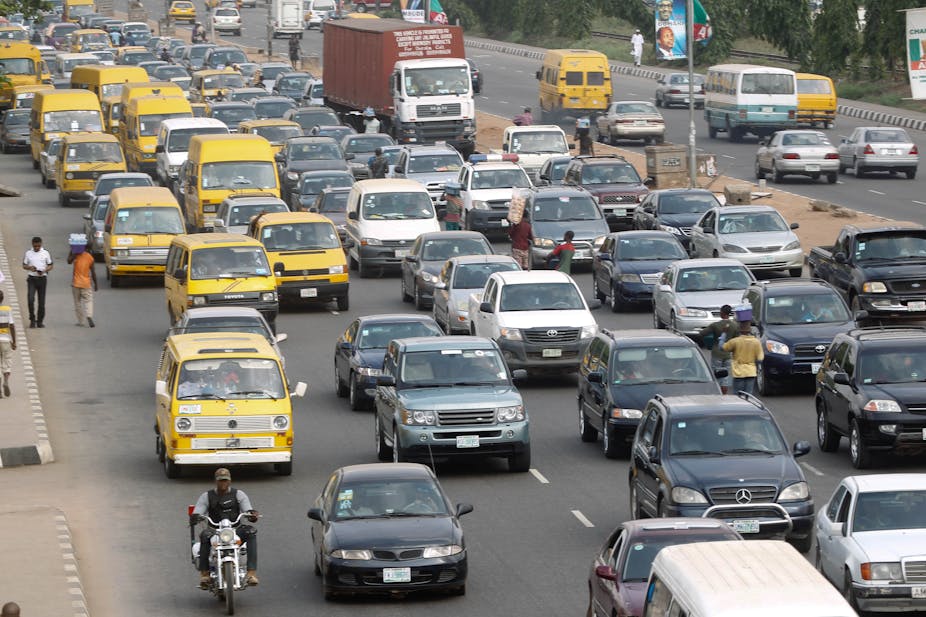Urbanisation is spreading across Africa at great speed. Projections suggest that more than half of the total population will live in urban areas by 2050. Urbanisation in Nigeria is happening at a particularly astonishing rate. The population density of urban dwellers in Nigeria is growing at an annual rate of 50 per square kilometre and it’s expected to rise to 450.9 per square kilometre by 2050.
These urban dwellers include a large number of people over the age of 60. The number of old people on the continent is expected to rise to 67 million by 2025, up from an estimated 43 million in 2010. Nigeria will experience an exponential increase the number of older people.
These developments call for a new urbanisation agenda. A large number of old people in urban spaces in Nigeria suffer from homelessness, abuse, neglect and destitution. The situation is further compounded by the absence of social protection policies that can reduce vulnerability in old age.
Old people in Nigeria’s cities can’t even rely on public transport. The urban renewal has led to the phasing out of the popular Molue buses while pedestrian bridges are built in a way that makes access challenging to physically challenged and older people with mobility problems. Access to safe public transportation system is one of the indicators of age-friendly cities and communities.
Among Nigeria’s 36 states, Lagos is leading in urban regeneration initiatives. Unfortunately, there are indications that older people and their needs are being marginalised. My research is motivated by the need to understand vulnerability and resilience in old age. The findings presented here focus on what it means to grow old in the city and how urban renewal initiatives might be shaping vulnerability in old age.
The study
Data was sought through individual interviews and media reports. All these sources have their focus on demolition of markets, shops and houses in Lagos State from 2012 to 2018. The City of Lagos has a history of demolitions of markets and neighbours that are predominantly inhabited by the less privileged. Older people are included among the victims of these demolitions. Those trading among them have lost their means of livelihood without the freedom to protest or any hope of compensation.
The report highlights the findings about mobility concerns, fears and experiences of using the public transportation system in Lagos.
Drawing from the experiences of 13 older people aged 60 to 78 years, the research found that the existing public transport system isn’t conducive to being used by older people.
The participants’ narratives and media reports portray the urban renewal efforts in the city as ageist and lopsided. While a great deal has been done to transform some crowded areas and commercial motor parks in the city, the changes made weren’t done in a way that helped old people. For example, pedestrian bridges had been built too high. There had also been a loss of means of livelihood and accommodation in the city.
All the interviewees had spent 29 years on average in the city. More men (8) than women had engaged in menial jobs to earn a living and have had to travel hours within traffic from one part of the city to another throughout their youthful life. The women were more into petty trading, and only one worked with one of the local government authorities before retirement.
All the interviewees had used public transport when they were younger until it became more difficult to move around the city. Even the Bus Rapid Transport (BRT) was described as mostly inaccessible. In the words of one of the interviewees:
I have been told that there are seats for older people in BRTs, but the drivers and commuters are often in a hurry that it becomes difficult for older people to catch up with them or even use the available seats.
Towards inclusive urban renewal
Urgent measures are required to avert or minimise the risks that come with using public mode of transportation in the city of Lagos. Existing public modes of transportation are in need of overhauling. Presently, the public mode of transport, pedestrian bridges and walkways are designed to reflect the needs of the young urban population. Walkways that will accommodate older people and their various mobility needs are urgently needed. Creating such pathways can enhance the safety of other social categories of commuters in the city.
More legislation and conscious efforts are required to protect the vulnerability of older people to abuse in public spaces. Buses can be provided for older people and those that are physically challenged.
The urban renewal initiatives must be inclusive and participatory. The demolition actions must be done in transparency and proper accountability. Inclusive urban regeneration framework is urgently required in addressing the existing gaps and the future mobility needs of the growing population of older people in the city. These efforts amongst others will place the City of Lagos on the march towards becoming one of the age-friendly cities in Nigeria and Africa.

